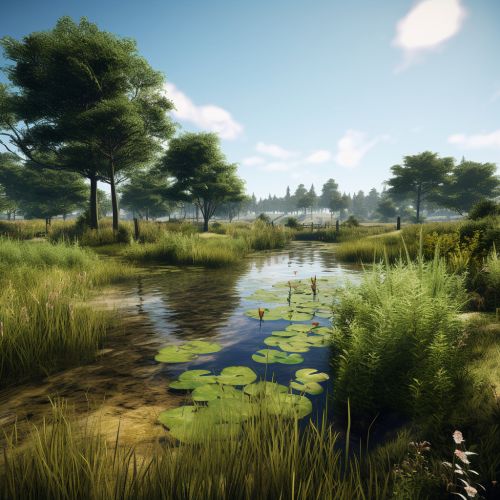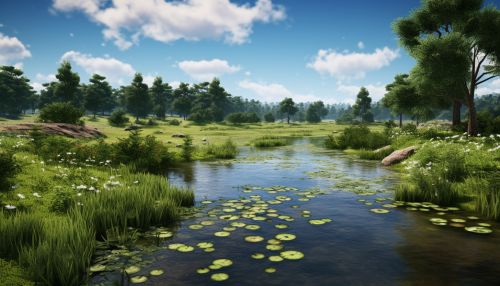Wetland Restoration and Ecosystem Services
Introduction
Wetland restoration involves the renewal of wetlands that have been damaged or destroyed due to human activities or natural disasters. It is a critical component of conservation biology and environmental science, aimed at restoring the structure, function, and biodiversity of these unique ecosystems.


Importance of Wetlands
Wetlands are among the most productive and biologically diverse ecosystems on Earth. They provide a range of ecosystem services that are essential for human well-being and environmental sustainability. These include water purification, flood control, carbon sequestration, and providing habitat for a wide variety of wildlife. However, wetlands worldwide have been significantly degraded or lost due to urban development, agriculture, pollution, and climate change.
Wetland Restoration Techniques
Wetland restoration techniques vary depending on the type of wetland and the specific damage that has occurred. Common techniques include hydrological restoration, which involves restoring the natural water flow and water levels, and vegetation restoration, which involves planting native wetland plants to restore the natural plant community. Other techniques may involve soil amendments, invasive species control, and the reintroduction of native wildlife.
Ecosystem Services of Restored Wetlands
Restored wetlands can provide a range of ecosystem services, including:
- Water Purification: Wetlands act as natural filters, removing pollutants from water through processes such as biodegradation, adsorption, and precipitation.
- Flood Control: By absorbing and storing excess rainfall, wetlands can help to reduce the impact of floods.
- Carbon Sequestration: Wetlands, particularly peatlands, are significant carbon sinks, helping to mitigate climate change by absorbing and storing carbon dioxide from the atmosphere.
- Biodiversity Conservation: Restored wetlands provide habitat for a wide variety of wildlife, including many threatened and endangered species.
Challenges in Wetland Restoration
Despite the benefits, wetland restoration can be challenging. It requires a thorough understanding of the ecology and hydrology of wetlands, as well as the specific impacts that have led to their degradation. Other challenges include the lack of public awareness and support, regulatory hurdles, and the high costs associated with restoration projects.
Future Directions
With the increasing recognition of the importance of wetlands and the ecosystem services they provide, there is a growing emphasis on wetland restoration. Future directions may include the development of new restoration techniques, increased public and private funding for restoration projects, and the integration of wetland restoration into broader land and water management strategies.
